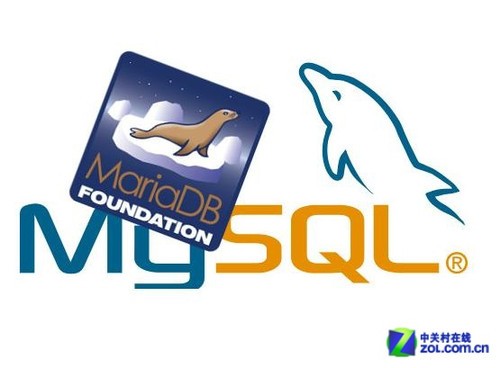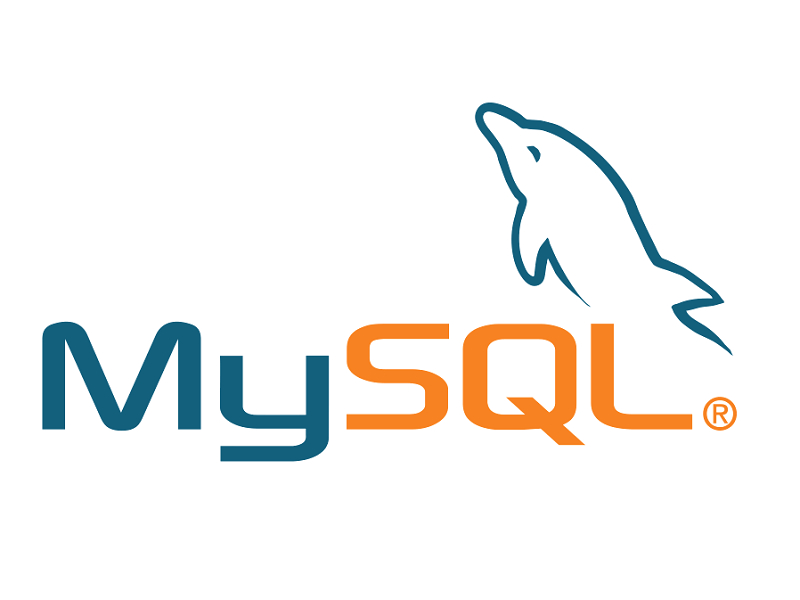10 recommended courses on exclusive locks
Among row-level locks, table-level locks and page-level locks in MySQL, we have introduced that row-level locks are the most granular locks in MySQL. Row-level locks can greatly reduce conflicts in database operations. Row-level locks are divided into shared locks and exclusive locks. This article will introduce the concepts, usage and precautions of shared locks and exclusive locks in detail. Shared lock (Share Lock) Shared lock, also known as read lock, is a lock created by read operation. Other users can read the data concurrently, but no transaction can modify the data (acquire an exclusive lock on the data) until all shared locks have been released. If transaction T adds a shared lock to data A, other transactions can only add shared locks to A and cannot add exclusive locks. Transactions that are granted shared locks can only read data and cannot modify data. Usage SELECT ... LOCK IN SHARE MODE; add LOCK IN SHARE MODE after the query statement, MySQL will add a shared lock to each row in the query result, when no other thread uses an exclusive lock on any row in the query result set , you can successfully apply for the shared lock, otherwise it will be blocked. Other threads can also read tables using shared locks, and
1. Sharing the usage of shared locks and exclusive locks in MySQL

Introduction: Among row-level locks, table-level locks and page-level locks in MySQL, we have introduced that row-level locks are the locking granularity in MySQL The most detailed type of lock, row-level locks can greatly reduce conflicts in database operations. Row-level locks are divided into shared locks and exclusive locks. This article will introduce the concepts, usage and precautions of shared locks and exclusive locks in detail. Shared lock (Share Lock) Shared lock, also known as read lock, is a lock created by read operation. Other users can read the data concurrently, but no transaction can modify the data (acquire an exclusive lock on the data) until all shared locks have been released. If transaction T
##2. Mysql-detailed explanation of various lock distinctions and MVCC

Introduction: MySQL seems to have a lot of locks. After checking most of the information, what are table locks, row locks, page locks, shared locks, exclusive locks, intention locks, read locks, and write locks? Lock, optimistic lock. . I'm going, I really want to ask, are there any golden locks? I still have Fan Bingbing. . . Oops, why does it feel so messy? So let’s sort it out and summarize it. Later, there is an understanding and examples of mvcc under innodb, which is simple and easy to understand. Table/row/page-lock: table-level locking (table-level locking): M
3. Whether file_put_contents will queue up when encountering a file exclusive lock
Introduction: file_put_contents('test.txt',$data,FILE_APPEND|LOCK_EX); As shown in the above statement, if a large amount of data is being written to a file, it will take a long time. Subsequent file_put_contents must also write data to this file. Since the file has an exclusive lock, subsequent file_put...
4. mysql5.1 and mysql5.5 create indexes Speed comparison

Introduction: In the MySQL5.1.X version, the process of creating and deleting a clustered index : 1. Create an empty table with the same structure as the original table, and then create a clustered index; 2. Copy the data of the original table to the new table. At this time, an exclusive lock will be added to the original table, and
Introduction: Spin lock in SQLSERVER There are many locks in SQLSERVER, such as what intention sharing Locks, exclusive locks, rows, and page locks all belong to LOCK. Latch is more lightweight than lock and only exists in memory. It is generally used to lock data pages to prevent multiple people from modifying a data page in memory at the same time. Introduced today The spin lock is more lightweight than the above two locks
6. The database cannot be locked with an exclusive lock
Introduction: When I implemented the example in the SQL video today, in order to avoid creating too many databases, I thought about changing the name of the already used database to the required one, but the computer was very naughty and always told me: Appears After this kind of mistake, there are two ways before me: First, I will find the solution online, and then proceed after solving it (maybe it will take longer than the time to create a new database);
#Introduction: There are two types of locks in the ORACLE lock mechanism: exclusive locks and shared locks. Exclusive locks: also known as X lock, when a user manipulates a piece of data, Oracle will automatically and implicitly add an exclusive lock to the record manipulated by the user. After the exclusive lock is added, other transactions cannot manipulate the data and can only view it. Other transactions cannot continue to add X locks. When this transaction ends, other transactions can
8. Oracle11g new features: online operation function enhancement
Introduction : Welcome to the Oracle Community Forum, interact and communicate with 2 million technical staff> The online processing function has been greatly enhanced in 11g, including online modification of table structure, online creation or rebuilding of indexes, establishment of invisible indexes, and table additions Non-null fields, online DDL and object dependency refinement, etc. Before 11g, DDL operations had to obtain the exclusive lock of the object. If
9. Exclusive lock for database transaction processing_MySQL
Introduction: Exclusive lock for database transaction processing
10. mysql second day lock_MySQL
Introduction: If there are no locks, the concurrency will be stronger, but data security will be problematic. Therefore, the database will lock the data. Shared locks and exclusive locks are read-write locks. Shared locks can be superimposed on shared locks but cannot be added on exclusive locks, while exclusive locks cannot be superimposed. Depending on the isolation level, etc., mysql will
[Related Q&A recommendations]:
php - Will file_put_contents queue up when it encounters a file exclusive lock?
Transaction-actual usage scenario of mysql shared lock lock in share mode
The above is the detailed content of 10 recommended courses on exclusive locks. For more information, please follow other related articles on the PHP Chinese website!

Hot AI Tools

Undresser.AI Undress
AI-powered app for creating realistic nude photos

AI Clothes Remover
Online AI tool for removing clothes from photos.

Undress AI Tool
Undress images for free

Clothoff.io
AI clothes remover

Video Face Swap
Swap faces in any video effortlessly with our completely free AI face swap tool!

Hot Article

Hot Tools

Notepad++7.3.1
Easy-to-use and free code editor

SublimeText3 Chinese version
Chinese version, very easy to use

Zend Studio 13.0.1
Powerful PHP integrated development environment

Dreamweaver CS6
Visual web development tools

SublimeText3 Mac version
God-level code editing software (SublimeText3)

Hot Topics
 1389
1389
 52
52
 When might a full table scan be faster than using an index in MySQL?
Apr 09, 2025 am 12:05 AM
When might a full table scan be faster than using an index in MySQL?
Apr 09, 2025 am 12:05 AM
Full table scanning may be faster in MySQL than using indexes. Specific cases include: 1) the data volume is small; 2) when the query returns a large amount of data; 3) when the index column is not highly selective; 4) when the complex query. By analyzing query plans, optimizing indexes, avoiding over-index and regularly maintaining tables, you can make the best choices in practical applications.
 Can I install mysql on Windows 7
Apr 08, 2025 pm 03:21 PM
Can I install mysql on Windows 7
Apr 08, 2025 pm 03:21 PM
Yes, MySQL can be installed on Windows 7, and although Microsoft has stopped supporting Windows 7, MySQL is still compatible with it. However, the following points should be noted during the installation process: Download the MySQL installer for Windows. Select the appropriate version of MySQL (community or enterprise). Select the appropriate installation directory and character set during the installation process. Set the root user password and keep it properly. Connect to the database for testing. Note the compatibility and security issues on Windows 7, and it is recommended to upgrade to a supported operating system.
 Explain InnoDB Full-Text Search capabilities.
Apr 02, 2025 pm 06:09 PM
Explain InnoDB Full-Text Search capabilities.
Apr 02, 2025 pm 06:09 PM
InnoDB's full-text search capabilities are very powerful, which can significantly improve database query efficiency and ability to process large amounts of text data. 1) InnoDB implements full-text search through inverted indexing, supporting basic and advanced search queries. 2) Use MATCH and AGAINST keywords to search, support Boolean mode and phrase search. 3) Optimization methods include using word segmentation technology, periodic rebuilding of indexes and adjusting cache size to improve performance and accuracy.
 Difference between clustered index and non-clustered index (secondary index) in InnoDB.
Apr 02, 2025 pm 06:25 PM
Difference between clustered index and non-clustered index (secondary index) in InnoDB.
Apr 02, 2025 pm 06:25 PM
The difference between clustered index and non-clustered index is: 1. Clustered index stores data rows in the index structure, which is suitable for querying by primary key and range. 2. The non-clustered index stores index key values and pointers to data rows, and is suitable for non-primary key column queries.
 MySQL: Simple Concepts for Easy Learning
Apr 10, 2025 am 09:29 AM
MySQL: Simple Concepts for Easy Learning
Apr 10, 2025 am 09:29 AM
MySQL is an open source relational database management system. 1) Create database and tables: Use the CREATEDATABASE and CREATETABLE commands. 2) Basic operations: INSERT, UPDATE, DELETE and SELECT. 3) Advanced operations: JOIN, subquery and transaction processing. 4) Debugging skills: Check syntax, data type and permissions. 5) Optimization suggestions: Use indexes, avoid SELECT* and use transactions.
 The relationship between mysql user and database
Apr 08, 2025 pm 07:15 PM
The relationship between mysql user and database
Apr 08, 2025 pm 07:15 PM
In MySQL database, the relationship between the user and the database is defined by permissions and tables. The user has a username and password to access the database. Permissions are granted through the GRANT command, while the table is created by the CREATE TABLE command. To establish a relationship between a user and a database, you need to create a database, create a user, and then grant permissions.
 Explain different types of MySQL indexes (B-Tree, Hash, Full-text, Spatial).
Apr 02, 2025 pm 07:05 PM
Explain different types of MySQL indexes (B-Tree, Hash, Full-text, Spatial).
Apr 02, 2025 pm 07:05 PM
MySQL supports four index types: B-Tree, Hash, Full-text, and Spatial. 1.B-Tree index is suitable for equal value search, range query and sorting. 2. Hash index is suitable for equal value searches, but does not support range query and sorting. 3. Full-text index is used for full-text search and is suitable for processing large amounts of text data. 4. Spatial index is used for geospatial data query and is suitable for GIS applications.
 RDS MySQL integration with Redshift zero ETL
Apr 08, 2025 pm 07:06 PM
RDS MySQL integration with Redshift zero ETL
Apr 08, 2025 pm 07:06 PM
Data Integration Simplification: AmazonRDSMySQL and Redshift's zero ETL integration Efficient data integration is at the heart of a data-driven organization. Traditional ETL (extract, convert, load) processes are complex and time-consuming, especially when integrating databases (such as AmazonRDSMySQL) with data warehouses (such as Redshift). However, AWS provides zero ETL integration solutions that have completely changed this situation, providing a simplified, near-real-time solution for data migration from RDSMySQL to Redshift. This article will dive into RDSMySQL zero ETL integration with Redshift, explaining how it works and the advantages it brings to data engineers and developers.




